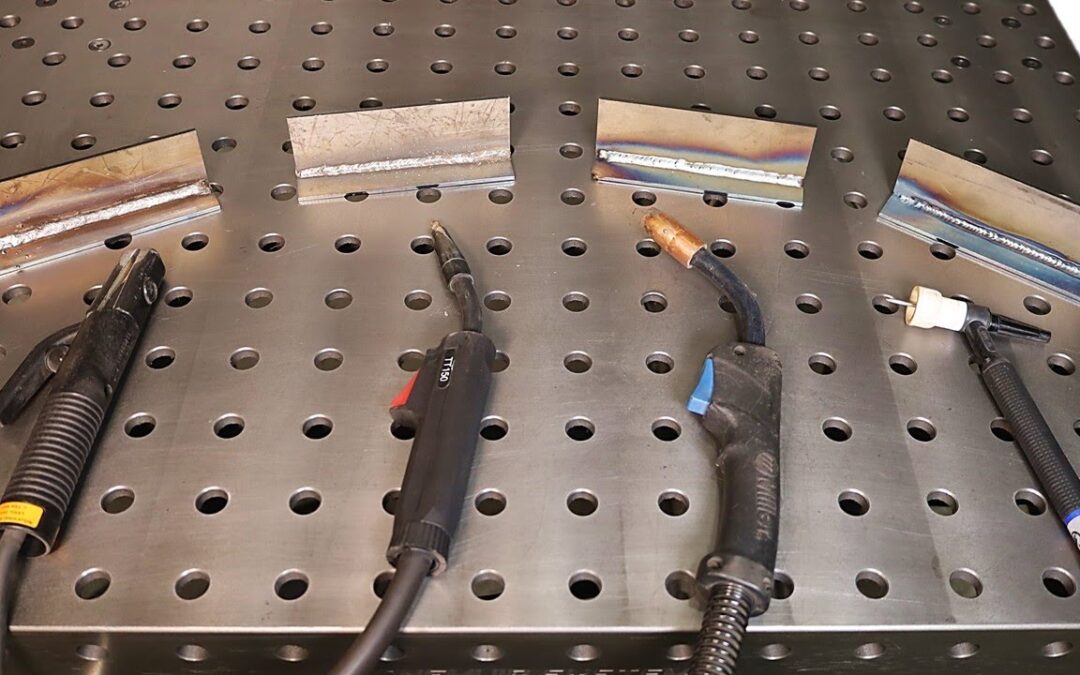Welding is a critical industrial process that joins materials, most commonly metals, through the application of heat and pressure. As technology and industry have evolved, several welding methods have emerged, each tailored to specific applications and materials. In this article, we will explore the four primary types of welding techniques, highlighting their unique characteristics, advantages, and common applications.
Arc Welding
Arc welding is one of the oldest and most widely used welding techniques. It relies on creating an electric arc between an electrode and the base metal to melt and fuse the materials together. There are several subtypes of arc welding, including:
Shielded Metal Arc Welding (SMAW)
Commonly known as “stick welding,” SMAW employs a consumable electrode coated with a flux that releases gases to shield the weld pool from atmospheric contamination. It is versatile, can be used in various positions, and is often used for construction, maintenance, and repair work.
Gas Metal Arc Welding (GMAW)
Also referred to as “MIG welding” (Metal Inert Gas), GMAW employs a continuous wire electrode that feeds through a welding gun, while an inert gas (usually argon or a mixture) shields the weld from oxidation. GMAW is known for its high welding speed and is widely used in automotive, manufacturing, and fabrication industries.
Gas Tungsten Arc Welding (GTAW)
Known as “TIG welding” (Tungsten Inert Gas), GTAW uses a non-consumable tungsten electrode to create the arc. An inert gas protects the weld zone, and filler metal may be added manually if required. GTAW produces high-quality, precise welds and is often used in aerospace, high-purity applications, and artistic metalwork.
Resistance Welding
Resistance welding joins materials by applying pressure and passing an electric current through the materials, creating heat at the joint. The heat, generated by the resistance of the materials to the electric current, causes them to fuse together. The main types of resistance welding are:
Spot Welding
Spot welding is commonly used for joining thin sheets of metal. It involves applying pressure and current at specific spots to create small, circular welds. Spot welding is widely used in the automotive industry for fabricating car bodies and components.
Seam Welding
Seam welding is similar to spot welding but creates a continuous weld along the entire length of the joint. It is often used in the manufacturing of pipes, tubes, and containers.
Gas Welding
Gas welding utilizes the combustion of acetylene or other fuel gases mixed with oxygen to generate a high-temperature flame for welding purposes. While this method has become less common in industrial applications due to the prevalence of arc welding, it is still valuable for certain tasks, such as:
Oxy-Fuel Welding
Oxy-fuel welding involves the fusion of metals by heating them to their melting point using a flame produced by the combustion of acetylene or other fuel gases mixed with oxygen. It is often used for repairs, brazing, and cutting operations.
Flux-Cored Arc Welding (FCAW)
Flux-cored arc welding is similar to GMAW but uses a tubular wire filled with flux instead of a solid wire. The flux provides shielding and produces a slag that protects the weld as it cools. FCAW is versatile and well-suited for outdoor and windy conditions, making it popular in construction and structural applications.
Conclusion
Welding is an indispensable process in various industries, from construction and manufacturing to automotive and aerospace. Understanding the four primary types of welding techniques – arc welding, resistance welding, gas welding, and flux-cored arc welding – is essential for selecting the appropriate method for a specific application. Each welding technique offers unique advantages, and choosing the right one can ensure the highest quality and efficiency in welding operations. As technology continues to advance, these welding methods are likely to evolve further, improving precision, safety, and productivity in industries worldwide.

